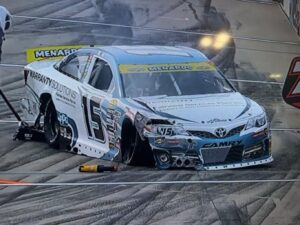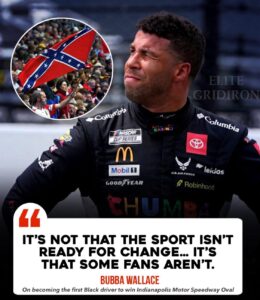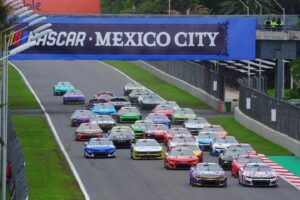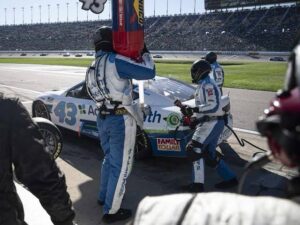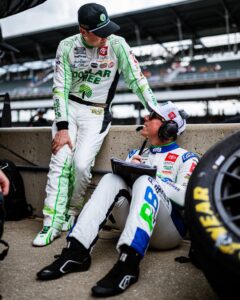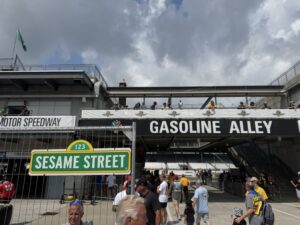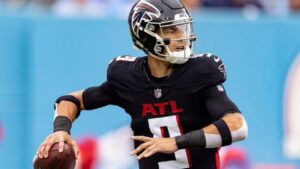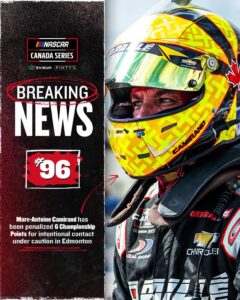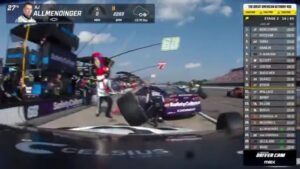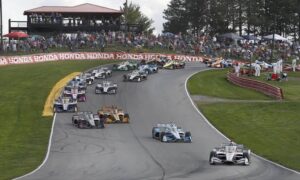The 2025 NASCAR season is set to introduce a series of new rules aimed at enhancing competition, improving safety, and increasing fan engagement. Among the changes, one stands out—a $1 million twist that promises to shake up the sport and put added pressure on teams and drivers. From the Cup Series to the Truck Series, these updates are expected to have far-reaching impacts. Here’s everything you need to know about the new rules for 2025.

1. $1 Million Bonus for Clean Driving
In a bid to encourage cleaner, fairer racing, NASCAR is introducing a $1 million bonus program for drivers in the Cup Series. This incentive will reward the driver who finishes the season with the least number of incidents classified as “avoidable contact.”
The bonus aims to promote respectful driving while reducing unnecessary wrecks that can disrupt races. However, it’s expected to add a strategic layer to the sport, with drivers balancing aggression and caution to vie for the lucrative prize.
Steve O’Donnell, NASCAR’s Chief Operating Officer, explained the reasoning behind the change:
“We want to reward the best drivers not just for their skill but for their respect for the competition. This program highlights the importance of clean, competitive racing that fans love to see.”
2. Updated Restart Zone Rules
Restart zones, a point of contention in recent seasons, are getting a revamp. In 2025, the restart zone will be extended by 25% at all tracks to give the leader more control. This change comes after drivers and teams voiced concerns about chaotic restarts and inconsistent rulings on restart violations.
Drivers will also face stricter penalties for jumping the restart or manipulating the start of a race, with a potential stop-and-go penalty enforced immediately.
3. New Safety Mandates for Cars
Safety remains a top priority, and NASCAR is implementing several new mandates for 2025:
• Stronger Rear Clips: After multiple high-impact crashes in 2024, cars will feature redesigned rear clips to better absorb energy and protect drivers.
• Helmet Sensors: All drivers will be required to wear helmets equipped with sensors to monitor impacts during crashes, providing real-time data to NASCAR’s medical teams.
• Mandatory SAFER Barrier Updates: Tracks will face stricter enforcement of SAFER (Steel and Foam Energy Reduction) barrier installation on all walls, including previously uncovered areas.
4. Tire Allocation Changes
For the 2025 season, NASCAR is adjusting its tire allocation policy to promote smarter tire management during races. Teams will now be limited to 12 sets of tires per race weekend in the Cup Series, down from 14.
This change is expected to impact race strategies significantly, especially at tracks known for high tire wear, such as Darlington Raceway and Atlanta Motor Speedway. Teams will need to carefully manage their tire usage, adding another layer of intrigue to race weekends.
5. Introduction of Heat Races for Select Events
To boost excitement and fan engagement, NASCAR is adding heat races to select events on the Cup Series schedule. Borrowing a page from dirt racing, the heat races will determine the starting lineup for the main event and give fans more on-track action throughout the weekend.
The Daytona 500 and Bristol Dirt Race are among the events confirmed to feature heat races in 2025. This format will provide drivers with more opportunities to earn points while giving fans a fresh perspective on the sport.
6. Stricter Charter System Rules
NASCAR is doubling down on its charter system, introducing new regulations to prevent teams from manipulating charter sales or leasing agreements. The rules include:
• Teams must hold a charter for at least two full seasons before selling it.
• Leasing a charter will require NASCAR approval, ensuring it aligns with competitive integrity.
• Penalties for violating charter rules will include fines of up to $1 million and potential loss of the charter.
This move comes after high-profile disputes in recent seasons, with NASCAR aiming to stabilize the charter system while promoting long-term investments in the sport.
7. Expanded Penalty System for Team Members
The penalty system is getting an overhaul to include stricter consequences for team members involved in post-race altercations or rule violations. Crew chiefs, spotters, and other team personnel will now face suspensions or fines for actions that jeopardize the sport’s integrity.
8. Carbon Neutrality Mandates for Teams
NASCAR has committed to reducing its carbon footprint, and the 2025 season will enforce new sustainability mandates. Teams must transition to using renewable fuels and implement eco-friendly practices in their operations. This initiative aligns with NASCAR’s broader goal of becoming carbon-neutral by 2035.
9. Introduction of a Mid-Season “Wildcard Race”
For the first time, NASCAR will host a mid-season “Wildcard Race” with a unique format and rules. Scheduled for July, the event will feature shorter stages, a random draw for starting positions, and a $2 million purse for the winner.
This experimental race is designed to inject unpredictability and excitement into the season, giving mid-tier teams a chance to shine.
Fan Reactions and Anticipation
The 2025 rule changes have sparked a wave of reactions across the NASCAR community. Fans are particularly intrigued by the $1 million clean driving bonus, which could drastically alter race dynamics.
“It’s about time NASCAR did something to promote clean racing,” one fan commented on social media. “But I wonder how aggressive drivers like Ross Chastain will handle this.”
Others are skeptical about the changes, especially the tire allocation limits and charter system rules, fearing they could stifle competition.

NASCAR’s 2025 season promises to bring significant changes that could reshape the sport. From incentivizing cleaner racing with a $1 million bonus to implementing safety updates and introducing innovative race formats, these new rules reflect NASCAR’s commitment to evolving the sport for drivers, teams, and fans alike.
As the season approaches, all eyes will be on how these changes impact the racing product on the track—and whether they’ll deliver on the promise of a more competitive and thrilling NASCAR experience.
















